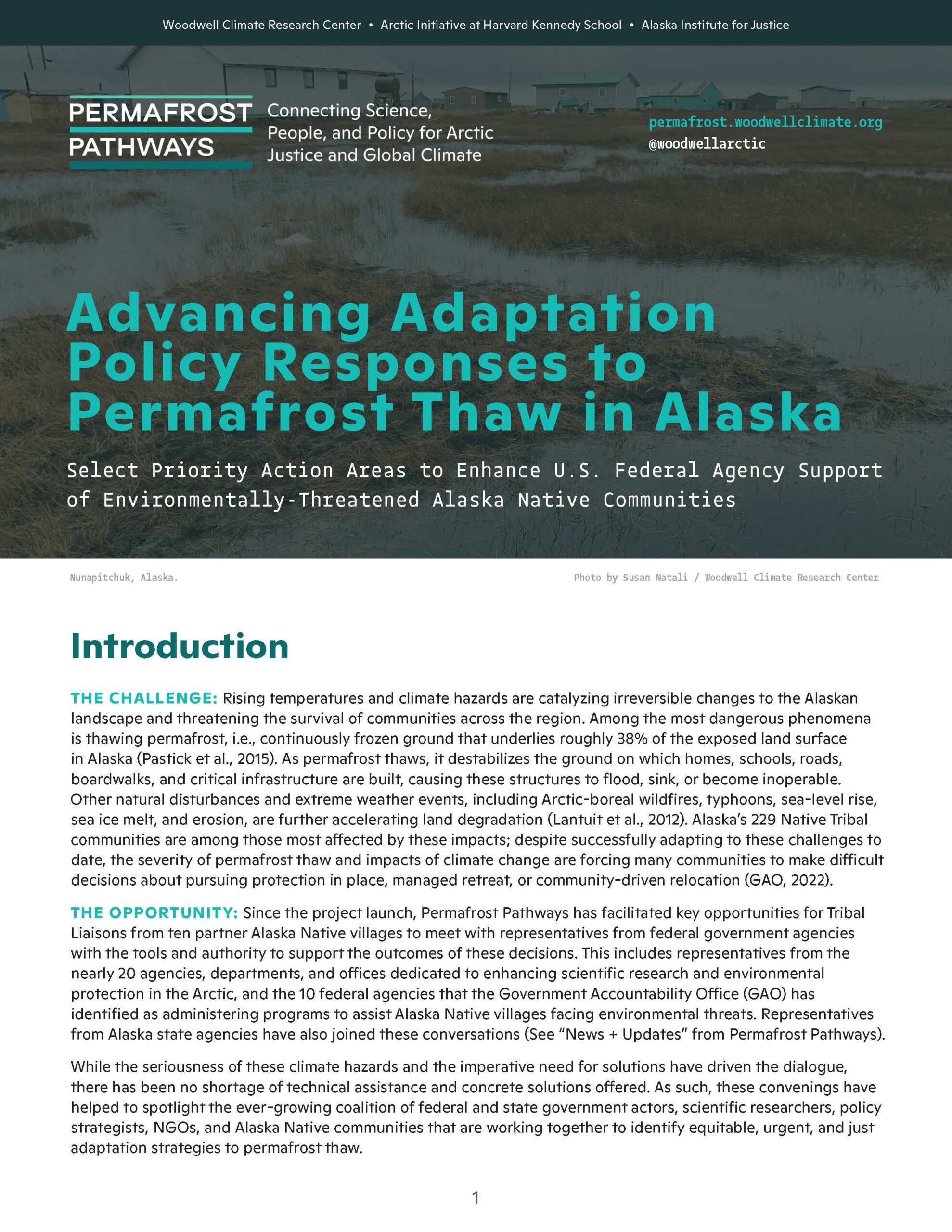Advancing adaptation policy responses to permafrost thaw in Alaska

Arctic Policy Lead, Woodwell Climate Research Center
Introduction
Rising temperatures and climate hazards are catalyzing irreversible changes to the Alaskan landscape and threatening the survival of communities across the region. Among the most dangerous phenomena is thawing permafrost, i.e., continuously frozen ground that underlies roughly 38% of the exposed land surface in Alaska (Pastick et al., 2015). As permafrost thaws, it destabilizes the ground on which homes, schools, roads, boardwalks, and critical infrastructure are built, causing these structures to flood, sink, or become inoperable. Other natural disturbances and extreme weather events, including Arctic-boreal wildfires, typhoons, sea-level rise, sea ice melt, and erosion, are further accelerating land degradation (Lantuit et al., 2012).
Alaska’s 229 Native Tribal communities are among those most affected by these impacts; despite successfully adapting to these challenges to date, the severity of permafrost thaw and impacts of climate change are forcing many communities to make difficult decisions about pursuing protection in place, managed retreat, or community-driven relocation (GAO, 2022).
Go to top


